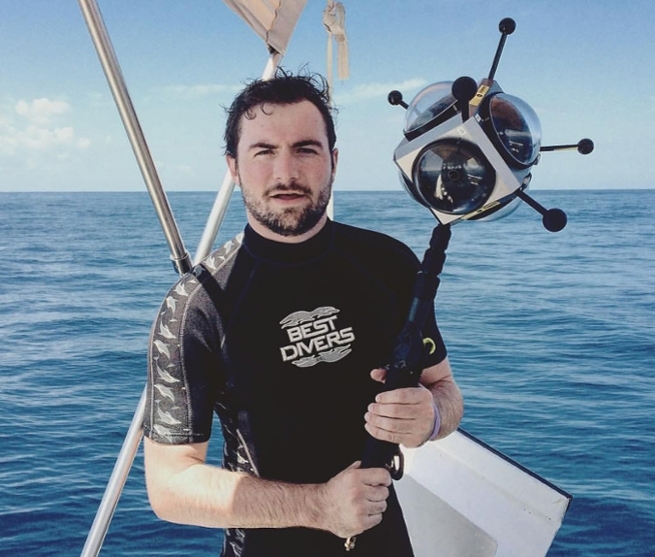SMAD alum dives in to virtual reality
Media Arts and Design
SMAD alumnus Griffin Harrington ('15) recently started working with Discovery's virtual reality projects, and he took a few minutes to tell us what he's been up to as he works in this emerging media field.
What have you been up to? It has been a whirlwind of a summer. I got hired in June to be the Producer for Discovery VR on the Interactive Team. I had never heard of virtual reality before my interview, but after hundreds of hours of research/testing/production my team has made over a dozen really amazing virtual reality experiences.
What projects are you working on, and how does virtual reality make them better than traditional media? I have worked on roughly a dozen projects so far in VR, and in my opinion, not all of them should have been VR. VR is a 360 degree experience, so for VR to utilized correctly, there needs to be multiple points of interest (as I like to call it) in every shot, and that is something were still learning and the whole industry is still learning. We have had to change how we think about video production.
Some are saying virtual reality is the next big thing in media. Why do you think that is, and what does it do for the audience experience? Virtual Reality is the next medium. I see it as a progression in the same light as the radio to TV. Now it's TV (digital) to virtual reality. Virtual reality creates immersion and allows for storytelling in a whole new way. Oculus (a leader in VR distribution and tech) talks a lot about how VR content has a lot of similarities to theater because how hard it is to direct the audience's eyes. In VR, the viewer is in total control of their experience so it's the creators' job to make stories that are interesting in 360 degrees. I like to think about VR as theater in the round, but in reverse. The audience is in the center, and all of the action is happening around them. It's hard to go back and not be able to look left and right when I watch traditional media. I have learned to want more, and I think consumers will feel the same when they have more VR experiences.
With the technology being so new, you're learning as you go. So, what does that say about having to learn the foundations of media while being nimble once you're in the field? What foundations are still key even with the new technology? This industry doesn't just change everyday, it changes every hour. I am constantly excited to wake up in the morning to see what new VR news I missed while I was asleep. My only constant in my job so far has been the idea of "multiple points of interest." No one in our industry really knows how to tell a story 100 percent successfully yet, so while we figure that out, I'm focusing on learning and creating the best looking footage so that when can focus on story, the footage will look awesome.
What's next for virtual reality? Story is next. We've made a lot of "Wow!!... look at that!" experiences, but there hasn't been a fantastic story yet tied to the visuals.
For a sample of a Discovery virtual reality experience, click here or play the video below.
